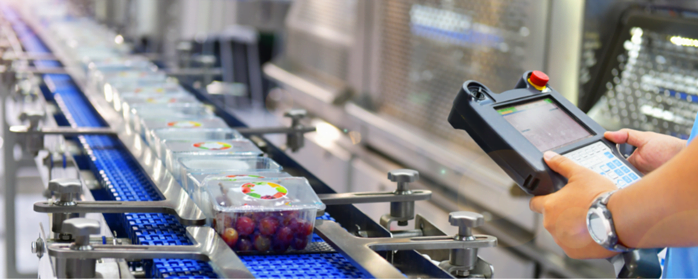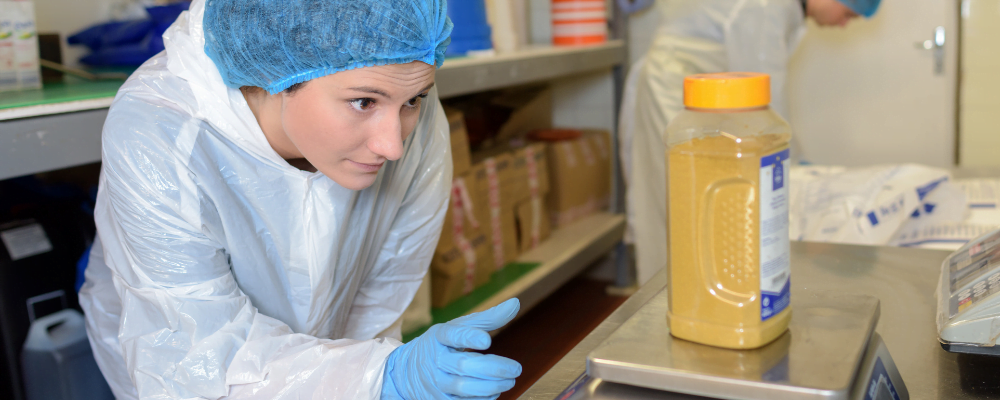With ongoing reports of labour shortages and the rising costs of raw materials hitting production lines cross-industry, access to data via IIoT technology (Industrial Internet of Things) offer invaluable insight to help manufacturers automate and drive efficiencies. As we celebrate our 50th anniversary and look to the future, Simon Hyde, Senior Engineer, explains how IIoT-enabled data capture and analysis are revolutionising traditional weighing processes and their role in addressing today’s manufacturing challenges.
How has IIoT transformed weighing practices and what benefits are being realised?
The rapid development of weighing equipment that enables information capture and transfer has empowered organisations to collect, store and analyse weighing data more efficiently than ever before. In turn, organisations have utilised data-driven insights to benefit from:
- Enhanced quality and compliance via end-to-end access to critical weighing data
- Greater productivity and Overall Equipment Effectiveness (OEE) thanks to automated, real-time data processing
- Increased uptime facilitated by data trends that inform predictive maintenance
Put simply, the integration of IIoT technology features has improved our ability to access, interpret and respond to critical weighing data faster and smarter.
Which weighing processes have IIoT-enabled data features impacted the most?
- Checkweighing
Traditionally, human intervention would be required to rectify downstream out-of-tolerance issues that led to product waste/ giveaway and/ or reduced yield. Minebea Intec’s Trend Control function, available via the Minebea Intec Checkweigher Flexus® and Minebea Intec Synus® Checkweigher, allows the checkweigher to communicate with the filling machine. Through this smart feature, real-time adjustments can be made to vary the filling quantity. Thereby, reducing giveaways, stoppages, as well as safeguarding quality and compliance.
- Load-cell monitoring
Early adopters of remote monitoring technologies such as the SmartCan by Cardinal are benefiting from real-time load cell performance tracking. By converting analogue load cells to digital systems, operators can monitor individual load cell performance and subsequently, identify potential failures and fixes quickly and effectively. Ultimately, boosting uptime and productivity.
- Preventative maintenance
Software systems such as Minebea Intec’s StatisticalProcessControl@Enterprise provides real-time access to weighing equipment performance as well as combined trend reporting against errors. Not only do these features reduce downtime, but also empower managers to proactively monitor common faults, investigate causes and implement a preventative maintenance plan to reduce cost.
- Quality control
Weighing equipment with IIoT technology has evolved to include features that deliver visual or audio cues in response to detected deviations originating from human errors. The OHAUS Defender features on-screen prompts so operators can better understand instructions and adapt to feedback in real-time. Consequently, helping to safeguard against safety and compliance issues.
How do you see weighing technologies evolving?
Connectivity and integration options for both hard and software solutions will continue to expand and take centre stage. As well as supporting centralised, anytime, anywhere access to real-time data, wider connectivity and integration options can also support the seamless implementation of ancillary technologies in the future. Current connectivity options include USB ports, Bluetooth, Ethernet and WiFi. These features future proof your weighing processes and lessen the risk of your equipment becoming prematurely obsolete.
Customisation and personalisation will also become commonplace as we enter the era of Industry 5.04 (or the fifth industrial revolution). And we’re already seeing this take pace with the launch of Sartorius Cubis® II with QApps packages, which can be fully customised to capture and analyse data to your exacting requirements. For example, numerous QApp configurations and combinations allow you to customise everything from Laboratory Information Management Systems (LIMS) to operator access levels.
What are the costs of slow adoption of IIoT technology?
If you haven’t yet considered the implementation of Industrial Internet of Things (IIoT) weighing technologies, now is the time to plan and subsequently invest. With the potential to transform data access, drive labour efficiencies and cut costs, the benefits to business sustainability and growth will outstrip upfront costs. Conversely, the consequence of slow adoption can have a major impact on business productivity and revenue. By allowing the competition to take advantage of inefficiencies, they’ll be better placed to offer a more cost-effective and profitable solution to win business.
Sources
1 Bhagat, V (2021) ‘10 Ways IoT Is Enabling a New Era of End-to-End Manufacturing Monitoring & Actionable Analytics’ [Online] https://customerthink.com/10-ways-iot-is-enabling-a-new-era-of-end-to-end-manufacturing-monitoring-actionable-analytics/ Accessed 10th August 2021
2 Carr, R (2021) ‘Using IIoT to Help Solve Worker Shortage Challenges ‘ [Online] Available at https://industrytoday.com/using-iiot-to-help-solve-worker-shortage-challenges/ Accessed 10th August 2021, paragraph 3
3Burkhalter, M (2020) ‘Quality control in the era of IoT and automation’ [Online] Available at https://www.perle.com/articles/quality-control-in-the-era-of-iot-and-automation-40189762.shtml Accessed 12th August 2021, paragraph 7
4 Rossi, B (2018) ‘What will Industry 5.0 mean for manufacturing?’ [Online] available at https://www.raconteur.net/manufacturing/manufacturing-gets-personal-industry-5-0/ Accessed 12th August 2021





